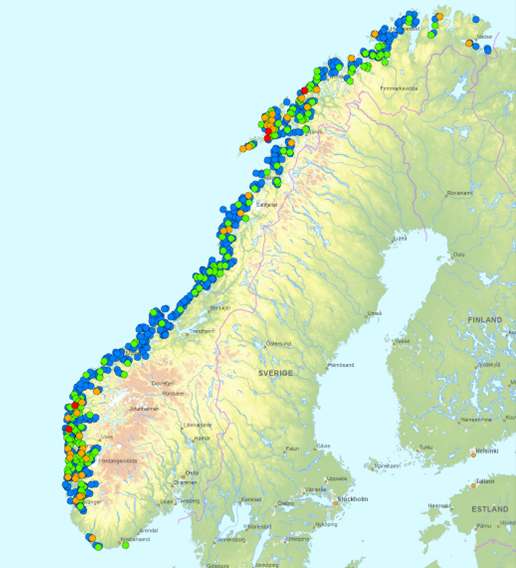Impact
Farmed fish as a sustainable source of protein
The fish need significantly less space and water, and, together with chicken, they release the least number of pollutants. The feed conversion ratio (FCR) indicates that fish is a very efficient protein.
SDG Impact
The world of sustainability is rapidly evolving, and with it our understanding of it. Where in the past, largely qualitative arguments were still acceptable to demonstrate a commitment to sustainability, there remains in times of greenwashing an increasing need for sustainability to be transparent and quantifiable.
We aim to address said need going forward by quantifying the impact our portfolio companies have on the Sustainable Development Goals (SDGs). Our funds’ contribution to each of the SDGs will be disclosed in the figure below, with the individual SDGs listed on the outer circle in clockwise direction and the portfolio-weighted contributions of the fund expressed in percent shown on the inside.
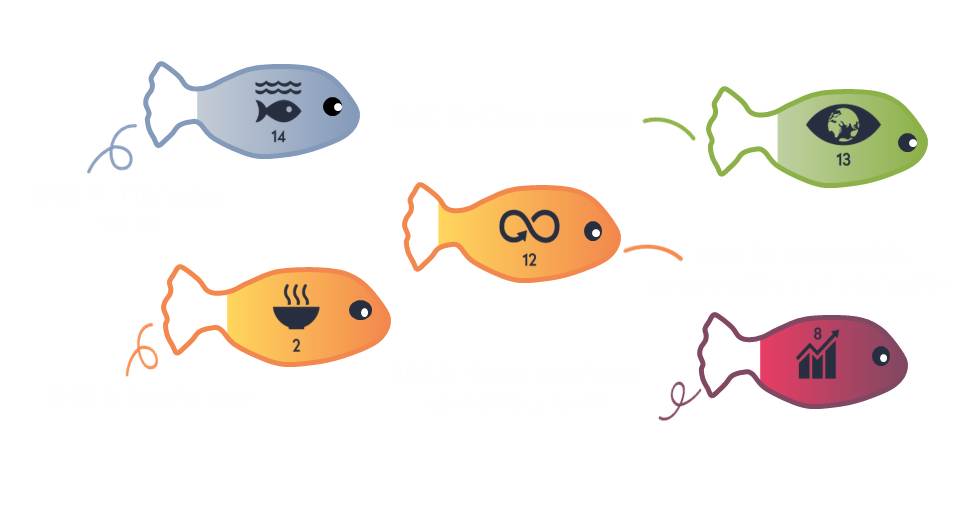

The impact measurement, i.e. the assessment which of the SDGs a company contributes to, will be based exclusively on the companies’ own public self-assessment. Contributions will at the moment not be weighted according to company revenues. A company with significantly higher sales and thus presumably also a larger area of influence, will therefore not be explicitly weighted higher. However, due to the strong relationship between a company's sales, its market capitalisation and its portfolio weighting in our funds, this effect will largely cancel out automatically.
The reasons we opted for this method of impact measurement, is mostly because it is transparent and easily comprehensible. While the disadvantages of this approach certainly include a possible lack of objectivity in the companies’ self-assessment, we find this criticism to also be valid in the case of impact measurements conducted by rating agencies or investment funds. In our opinion, the advantages therefore currently outweigh the disadvantages. And in the medium term, we also intend to add relevant key performance indicators to substantiate the companies’ self-assessments.
With above-average contributions to SDGs #2 (zero hunger), #3 (good health and well-being), #12 (responsible consumption and production), #13 (climate action) and #14 (life below water), the results appear to be largely in line with our expectations of seafood as a comparatively healthy and resource-efficient source of food.
Industry risks
Antibiotics
For a long time, Norwegian salmon producers were rightly frowned upon for their excessive use of antibiotics. Since then, however, vaccines have been developed for most diseases which, together with preventive measures in animal welfare, have contributed to a dramatic reduction in the amount of antibiotics required to a level that is insignificant today.
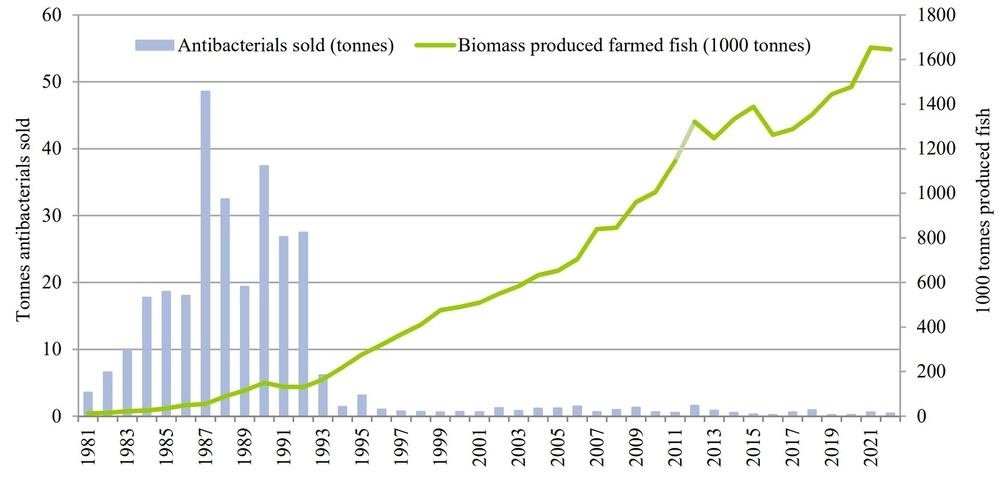
Sea lice
Fish lice have always been the arch enemy of farmed salmon. This is why a whole range of measures have been developed over the years to combat them. From natural predators to laser weapons and mechanical cleaning of the fish, everything is included. In future, submersible cages are to provide a final remedy by separating salmon and fish lice.
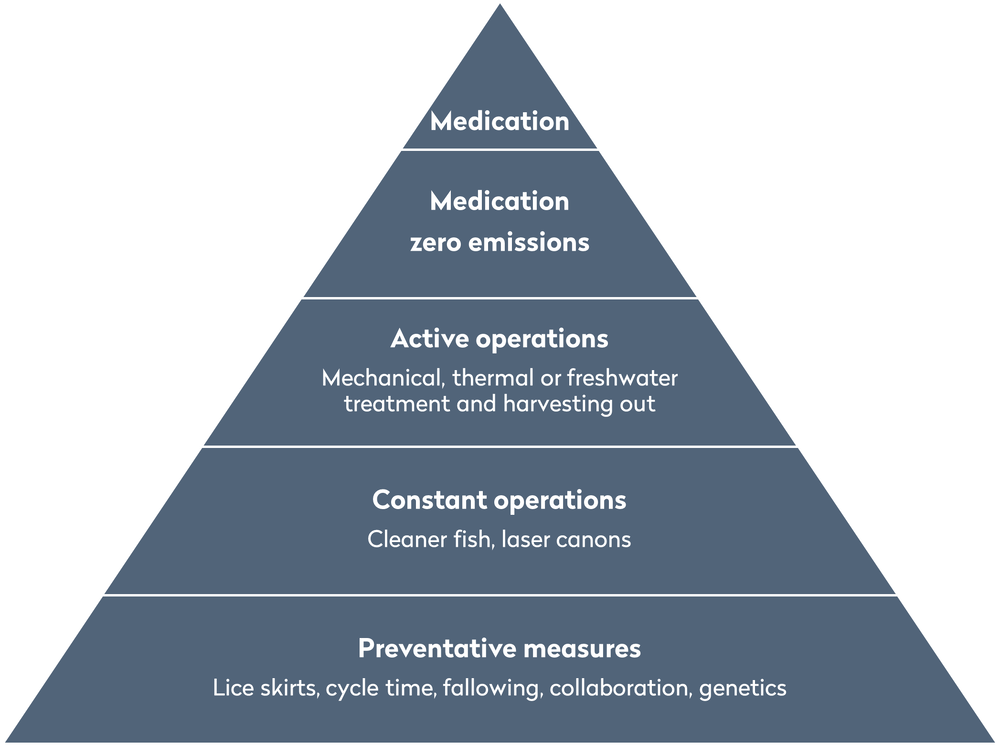
Fish feed
Farmed salmon in particular has been converted from pure carnivores to flexitarians in recent decades by optimizing the composition of feed. This not only protects natural fish stocks, but also consumers' wallets.
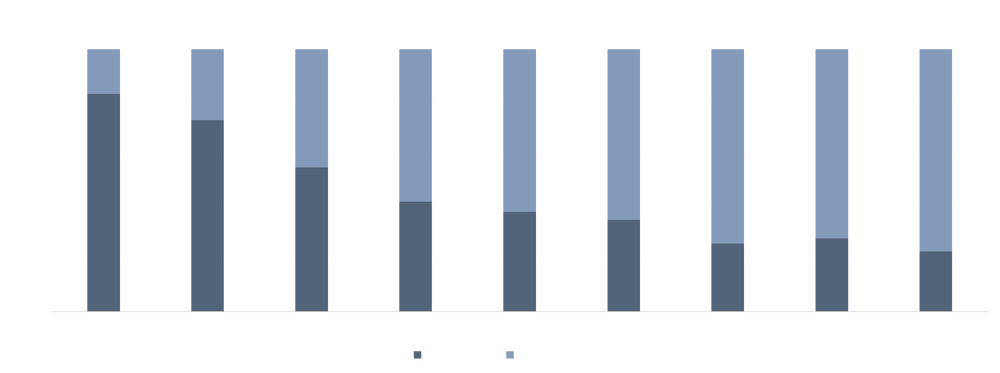
Plastic in seafood
Many people are concerned about the accumulation of plastic in the food chain of fish, but studies show that even when we consume mussels, which are eaten with their innards and stomach contents, we only ingest absolutely negligible amounts of plastic. Other sources of danger are more deserving of our attention.
Sustainability of wild fish
A well-known FAO graphic shows that sustainably fished fish stocks are continuing to decline. However, the amount of sustainably fished fish is actually increasing worldwide, as healthy fish stocks are being fished much more intensively.
In principle, it can be said that monitored fish stocks develop positively in the long term. Many countries are already well advanced in this respect, while others still have some catching up to do.
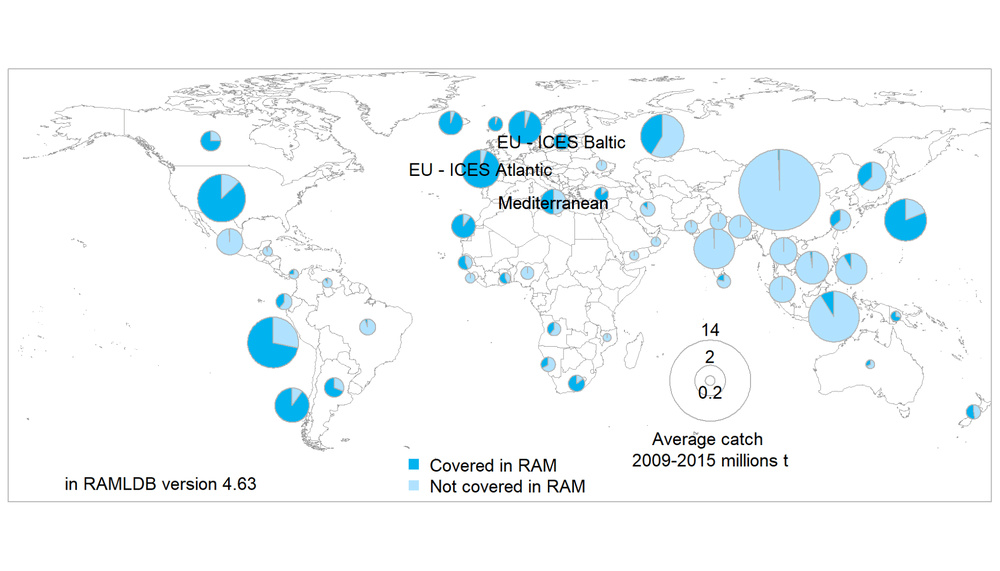
Fish welfare
Fish welfare is ensured through compliance with the Five Freedoms.
These ensure:
- Freedom from hunger or thirst by ready access to fresh water and a diet to maintain full health and vigour.
- Freedom from discomfort by providing an appropriate environment including shelter and a comfortable resting area.
- Freedom from pain, injury or disease by prevention or rapid diagnosis and treatment.
- Freedom to express (most) normal behaviour by providing sufficient space, proper facilities and company of the animal's own kind.
- Freedom from fear and distress by ensuring conditions and treatment which avoid mental suffering.
Water and seabed quality
Salmon farms are commonly criticized for their benthic impact, i.e. their effect on water quality and the seabed around them. Feces and uneaten feed sink to the ground, thereby polluting the environment around them.
The statistics, however, tell a different story. Every farm must undergo a regular assessment of its benthic impact. The results from the Norwegian Directorate of Fisheries show that the vast majority of sites actually receive the highest possible grade (blue dot), while only a handful fail the assessment (red dot).
